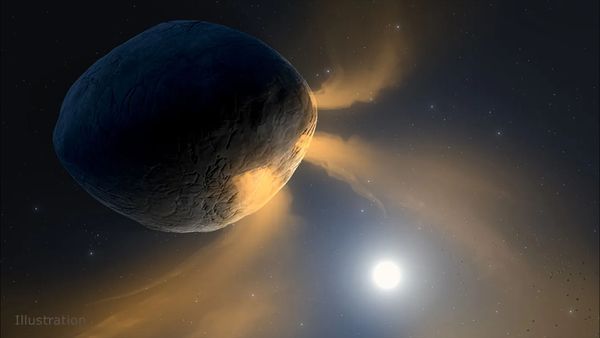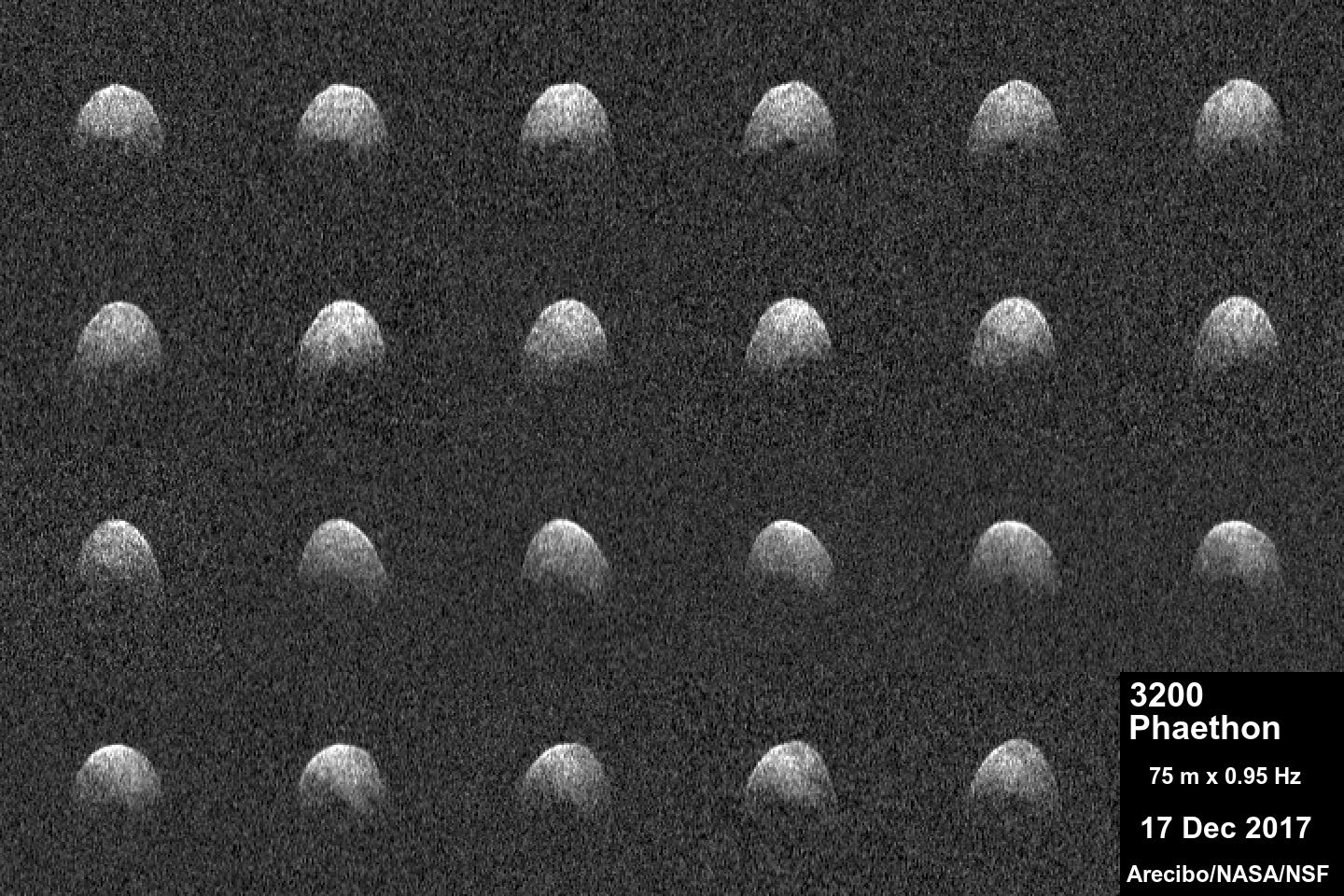
[ad_1]
The rocks making up the Geminid meteor shower that occurs towards the end of every year may have been born through a chaotic event 18,000 years ago, a new study suggests — potentially making the meteoroids about 10 times older than previously estimated.
The Geminid shower is named after the constellation Gemini — the position in the sky from which the meteors seem to appear. But the meteors actually originate from 3200 Phaethon, a bizarre blue asteroid that swings along a watermelon-shaped orbit to come within just 0.14 astronomical units from the sun, or about one-10th the distance between Earth and the sun. At this point in its orbit, the 3.2-mile-wide (5.1 kilometers) Phaethon acquires a peculiar, comet-like tail.
For years, astronomers believed the tail was composed of rock fragments that form the dust cloud that in turn generates the Geminids. Recent observations, however, contradict this, indicating that the tail’s present-day particles are a thousand times smaller than the Geminids’ bead-size rocks and may even be vaporized sodium, not dust. Therefore, the cloud of rock responsible for the Geminid meteors must have formed sometime in the past. But when ― and how?
Related: AI algorithm discovers ‘potentially hazardous’ asteroid 600 feet wide in a 1st for astronomy
One theory suggests that Phaethon deposited the Geminid fragments near Earth around 2,000 years ago, because that was when the rock came closest to the sun, lead study author Hangbin Jo, a graduate student of astronomy at South Korea’s Seoul National University, told Live Science by email. However, Jo noted, if Phaethon produced the Geminids via comet-like activity, the asteroid would have needed to contain enormous amounts of ice to eject the fragments, which computer models indicate is unlikely.
Instead, Jo and co-author Masateru Ishiguro, professor in the astronomy program at Seoul National University, focused on a different mechanism: rotational instability. Jo said that, in such a process, solar radiation would “push” an asteroid, causing its rotation to slowly accelerate so that millions of years later, it would spin fast enough for centrifugal forces to overcome the gravitational forces gluing the asteroid’s smallest components together. In Phaethon’s case, such instability would partly fragment it, creating millions of gravel pieces — quite possibly, the Geminids. Their study has been accepted for publication in the journal Astronomy and Astrophysics.
To test their theory, the researchers worked backwards from the present day, determining Phaethon’s position and velocity over the past 100,000 years. They then picked nine time periods, each 1,000 years long, within which they simulated the asteroid ejecting rock bits.

In these simulations, Phaethon was modeled as a 261 trillion-pound (116 trillion kilograms) sphere rotating fast enough to slough off about 300,000 fragments, mainly from its midriff. This would mimic the asteroid’s behavior if the sun’s radiation made it rotationally unstable. The researchers then traced the paths of this debris across millennia, while considering the gravitational pulls from all the solar system’s planets.
The simulations revealed that a super-spinning Phaethon could have produced the Geminids. For one, their results suggested that the meteors’ total mass would average 10 million tons — which is consistent with predictions made using NASA’s Parker Solar Probe. Moreover, two simulations almost exactly mimicked the Geminids’ observed trajectories.
In these models, Phaethon’s mass-shedding occurred 18,000 years ago, leading the researchers to conclude this was when the particles responsible for the Geminids were likely cast into space. However, the simulations also revealed that these are only a fraction of the fragments generated during this event, which the combined gravities of Venus and Earth diverted towards us approximately 4,000 years ago.
The researchers hope that Japan’s Phaethon-bound DESTINY+ mission, scheduled for launch in 2025, will find proof of such rotational instability.
After shedding mass, Phaethon likely slowed down due to conservation of angular momentum, Jo said. But new observations suggest the space rock is spinning faster again, shortening its rotation period by 4 milliseconds every year. That means new meteors may one day be born — though only after millions of years.
[ad_2]